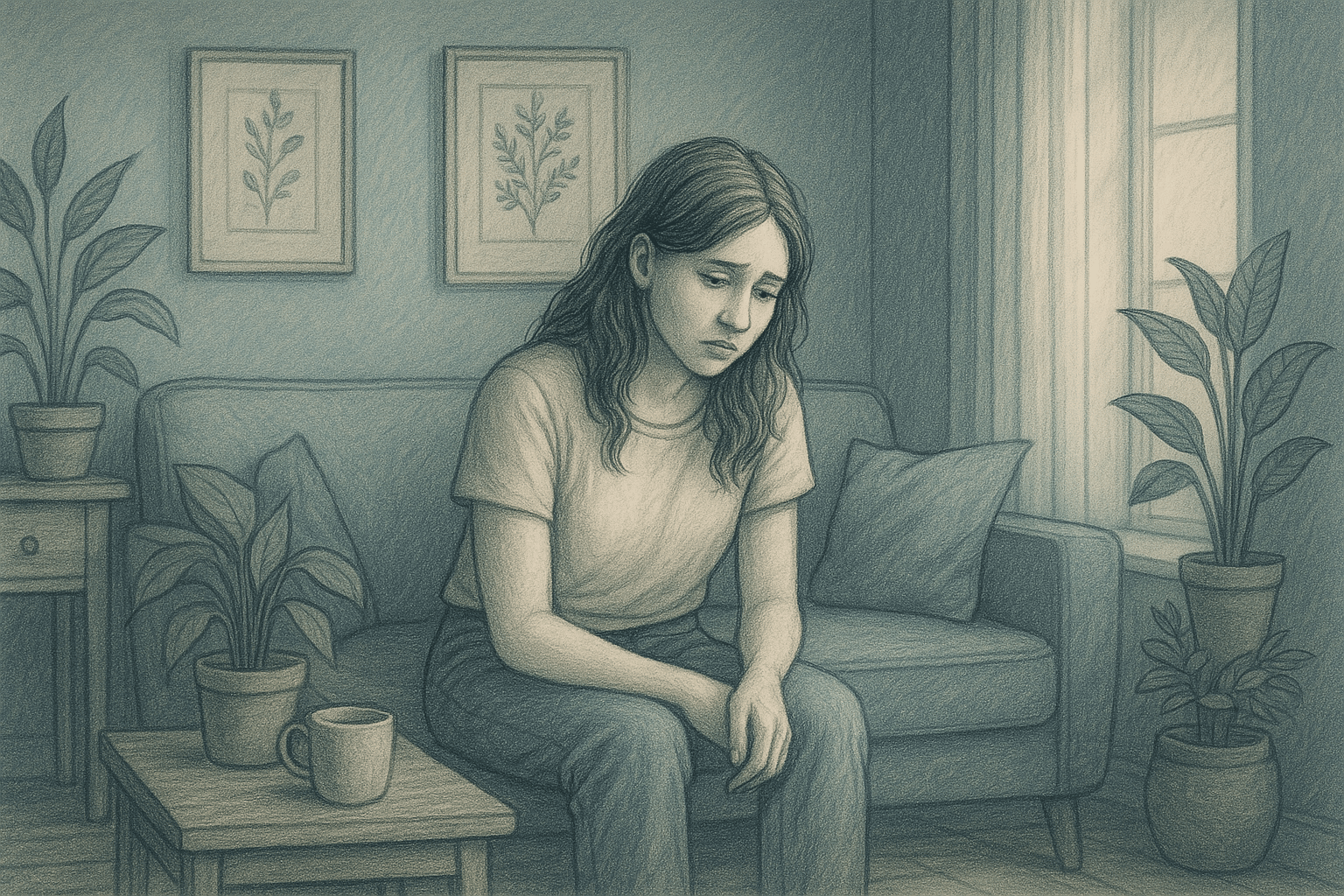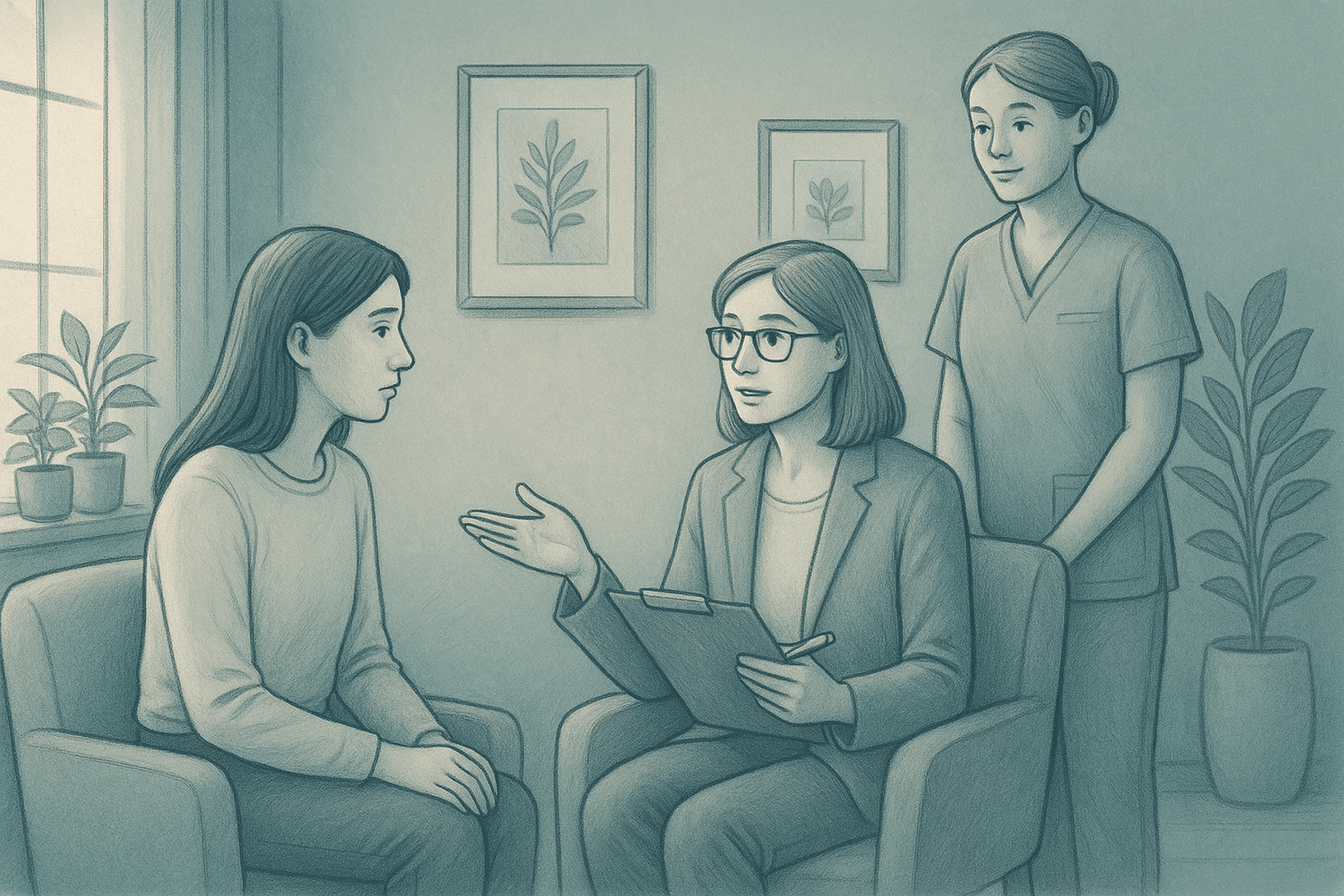Key Takeaways
- Females generally experience schizophrenia onset later than males, typically in their late 20s to early 30s.
- Hormonal changes, particularly involving estrogen, play a significant role in the timing of onset.
- Life stressors and genetic predispositions are key factors influencing the development of schizophrenia in females.
- Symptom presentation differs in males and females, with females often experiencing more mood-related symptoms like depression and anxiety.
- A Mission for Michael (AMFM) provides comprehensive treatment for women with schizophrenia, addressing both the core symptoms and the hormonal influences associated with the condition.
Onset and Prevalence of Schizophrenia in Females
The onset of schizophrenia in females typically occurs later than in males. While men often begin to show symptoms in their late teens to early 20s, women tend to develop symptoms in their late 20s to early 30s. This difference in onset can be attributed to various biological and environmental factors, including hormonal changes and stressors unique to females.
Differences Between Genders
Gender differences in schizophrenia are evident in the age of onset and in symptom presentation and progression. Females are more likely to experience mood-related symptoms, such as depression and anxiety, alongside the traditional symptoms of schizophrenia.
Peak Age Ranges
While the initial peak for schizophrenia onset in females is in their late 20s to early 30s, there is another notable peak after age 45. This secondary peak is particularly important as it suggests a link between hormonal changes during menopause and the onset of schizophrenia. Understanding these peak age ranges can aid in the development of targeted screening and prevention strategies.
Founded in 2010, A Mission For Michael (AMFM) offers specialized mental health care across California, Minnesota, and Virginia. Our accredited facilities provide residential and outpatient programs, utilizing evidence-based therapies such as CBT, DBT, and EMDR.
Our dedicated team of licensed professionals ensures every client receives the best care possible, supported by accreditation from The Joint Commission. We are committed to safety and personalized treatment plans.
Factors Influencing Onset In Women
Genetic Influences
Genetic factors play a crucial role in the development of schizophrenia. If a close family member, such as a parent or sibling, has schizophrenia, the risk of developing the disorder increases. This genetic predisposition can be further influenced by environmental factors, making it essential to consider both when assessing risk.
Hormonal Changes
Hormones, especially estrogen, have a significant impact on the onset of schizophrenia in females. Estrogen is believed to have a protective effect against schizophrenia symptoms, which may explain why females experience a later onset than males. During periods of hormonal change, such as menopause, the protective effect of estrogen decreases, potentially triggering the onset of schizophrenia.
Some studies suggest that estrogen therapy could be beneficial in managing schizophrenia symptoms in females, particularly during menopause. However, more research is needed to fully understand the relationship between hormones and schizophrenia and to develop effective treatment protocols.
Impact of Life Stressors
Life stressors, such as trauma, loss, or significant life changes, can also influence the onset of schizophrenia in females. These stressors can interact with genetic and hormonal factors, increasing the likelihood of developing the disorder. Therefore, managing stress and building resilience are crucial components of preventing and managing schizophrenia.
Prevalence Statistics of Schizophrenia in Women
Comparison with Male Prevalence
When comparing the prevalence of schizophrenia between males and females, it becomes clear that males are generally more frequently diagnosed. This difference is often attributed to the earlier onset age in males, which can lead to a more noticeable and disruptive impact during adolescence and early adulthood. However, while males may be diagnosed more often, females experience distinct challenges, particularly with symptom management and hormonal influences.
Global Patterns
Globally, schizophrenia affects approximately 1% of the population, with variations in prevalence based on geographic and cultural factors. In many regions, males are diagnosed at a higher rate than females, but the gap narrows with age. For example, in some countries, the rate of schizophrenia in females increases significantly after the age of 40, suggesting that cultural and environmental factors, alongside biological ones, play a crucial role in the onset and prevalence of the disorder.
Age-Related Trends
Age-related trends in schizophrenia onset reveal a distinct pattern where females have two peaks of onset: one in their late 20s to early 30s and another after the age of 45. This dual peak is not observed in males, whose onset typically occurs between the ages of 16 and 30. The later onset in females is thought to be linked to hormonal changes, such as those occurring during menopause, which can exacerbate symptoms or trigger the disorder.
Symptoms of Schizophrenia in Females

Symptoms of schizophrenia in females can vary widely, with mood-related symptoms like depression also present.
Common Symptoms
Common symptoms of schizophrenia in females include hallucinations, delusions, and cognitive disruptions. However, females are more likely to experience affective symptoms, such as depression and anxiety, alongside the primary symptoms of schizophrenia.
This combination can make the disorder more complex to diagnose and treat, as mood disorders may mask or overlap with schizophrenia symptoms.
Differences Compared to Males
Females with schizophrenia often present with more mood-related symptoms compared to their male counterparts. They may also exhibit fewer negative symptoms, such as flat affect or lack of motivation, which are more common in males.
Additionally, females are more likely to maintain better social functioning and insight into their condition, although this can vary widely among individuals.
Identification and Early Signs
Identifying early signs of schizophrenia in females can be challenging due to the overlap with other mental health disorders, such as depression or anxiety. Early signs may include social withdrawal, changes in sleep patterns, and difficulty concentrating. Because these symptoms can be subtle or attributed to stress or other factors, they are often overlooked until more pronounced symptoms develop.
Treatment and Management
Available Treatment Options
Standard treatment options for schizophrenia include antipsychotic medications, psychotherapy, and support services. Antipsychotic medications are the cornerstone of treatment and can help manage symptoms by balancing neurotransmitters in the brain.
Psychotherapy, such as Cognitive Behavioral Therapy (CBT), can provide valuable support in understanding and managing symptoms, improving social skills, and reducing stress.
Impact of Estrogen
Estrogen’s impact on schizophrenia in females is a topic of ongoing research. Some studies suggest that estrogen may have a protective effect against schizophrenia symptoms, which could explain the later onset in females and the second peak during menopause.
Hormone replacement therapy (HRT) has been explored as a potential adjunct treatment for schizophrenia in post-menopausal women, but more research is needed to establish its efficacy and safety.
Importance of Early Intervention

Early intervention in schizophrenia is crucial for improving outcomes and quality of life.
Recognizing early signs and symptoms allows for timely diagnosis and treatment, which can significantly reduce the severity of the disorder. By addressing symptoms early, individuals can maintain better social and occupational functioning, reducing the long-term impact on their lives.
Besides that, early intervention can prevent the progression of symptoms and the development of additional mental health issues. It also provides an opportunity for healthcare providers to educate individuals and their families about the disorder, fostering a supportive environment for recovery.
AMFM’s Expert Care for Female Schizophrenia Patterns
Understanding the unique timing and presentation of schizophrenia in females is essential for effective treatment. At AMFM, we recognize that women’s distinct pattern of onset typically occurs in their late 20s to early 30s, with a second peak after age 45, requiring specialized care that addresses both hormonal influences and gender-specific symptoms.
Our comprehensive treatment centers in California, Virginia, and Washington offer evidence-based approaches specifically designed for women’s experiences with schizophrenia. We understand that females often present with more mood-related symptoms alongside traditional schizophrenia symptoms, and our expert clinicians design individualized treatment plans that address this complexity.

From residential care to flexible outpatient programs, AMFM provides the appropriate level of support for each woman’s journey.
Our approach combines medication management with therapeutic interventions like CBT, family support, and holistic methods that consider the biological, psychological, and social aspects of schizophrenia in women.
With our exceptional staff-to-patient ratios and serene therapeutic environments, we create a safe space for healing where women can regain stability and develop the skills needed for long-term management.
Contact AMFM today and find out how our specialized approach can help you or your loved one manage the challenges of schizophrenia.
Frequently Asked Questions (FAQ)
How does schizophrenia onset differ between males and females?
Males typically experience schizophrenia onset earlier, in their late teens to early 20s, while females tend to develop symptoms later. Additionally, females may experience different symptom profiles, often with more mood-related symptoms.
What are the main symptoms of schizophrenia in females?
Common symptoms include hallucinations, delusions, and cognitive disruptions, often accompanied by mood-related symptoms such as depression and anxiety. These symptoms can vary widely among individuals.
What factors contribute to the development of schizophrenia in females?
Genetic predispositions, hormonal changes, and life stressors are key factors influencing the development of schizophrenia in females. These factors interact in complex ways, affecting the timing and presentation of symptoms.
Are there specific treatments more effective for females with schizophrenia?
Treatment for schizophrenia in females typically includes antipsychotic medications, psychotherapy, and support services. Hormone replacement therapy has been studied as a potential adjunct treatment, particularly during menopause, but more research is needed to confirm its efficacy.
What treatment options does AMFM offer for women with schizophrenia?
AMFM offers comprehensive treatment options including residential programs, Partial Hospitalization Programs (PHPs), Intensive Outpatient Programs (IOPs), and standard outpatient therapy.
Our treatment approaches are customized to address the unique needs of women with schizophrenia, including Cognitive Behavioral Therapy (CBT), medication management by experienced psychiatrists, individual and group therapy, family support services, and comprehensive approaches that consider hormonal influences on symptom presentation and management.












